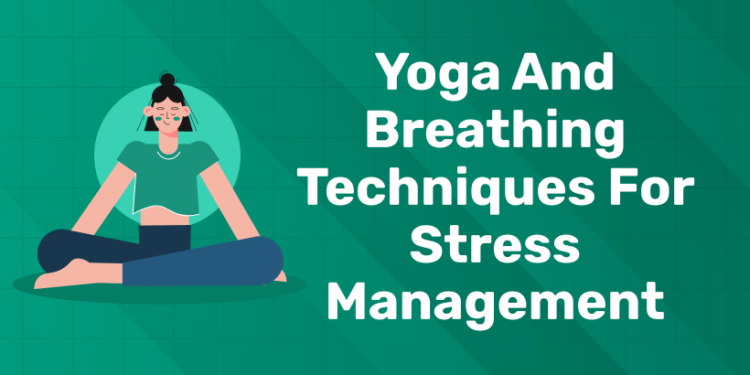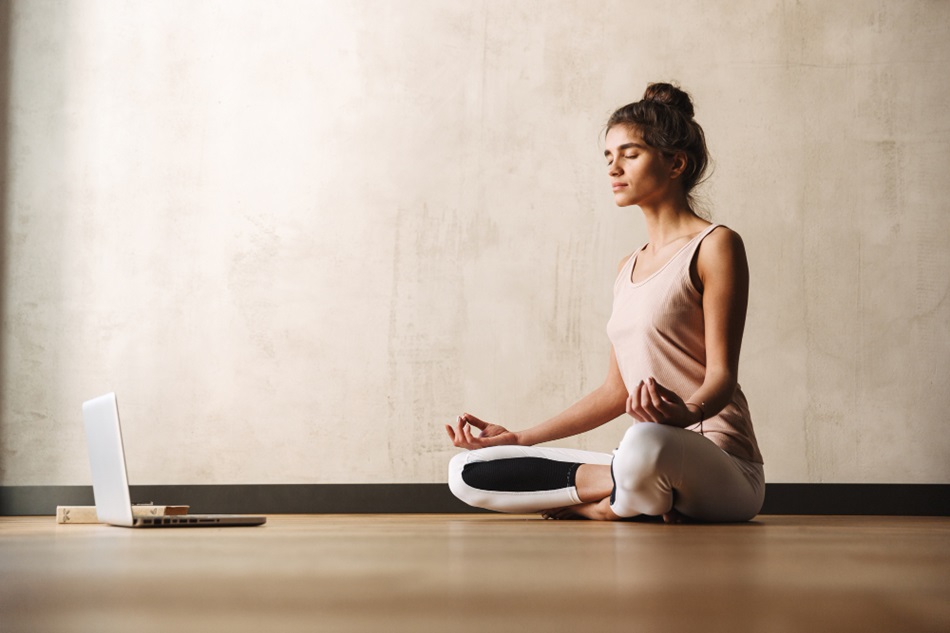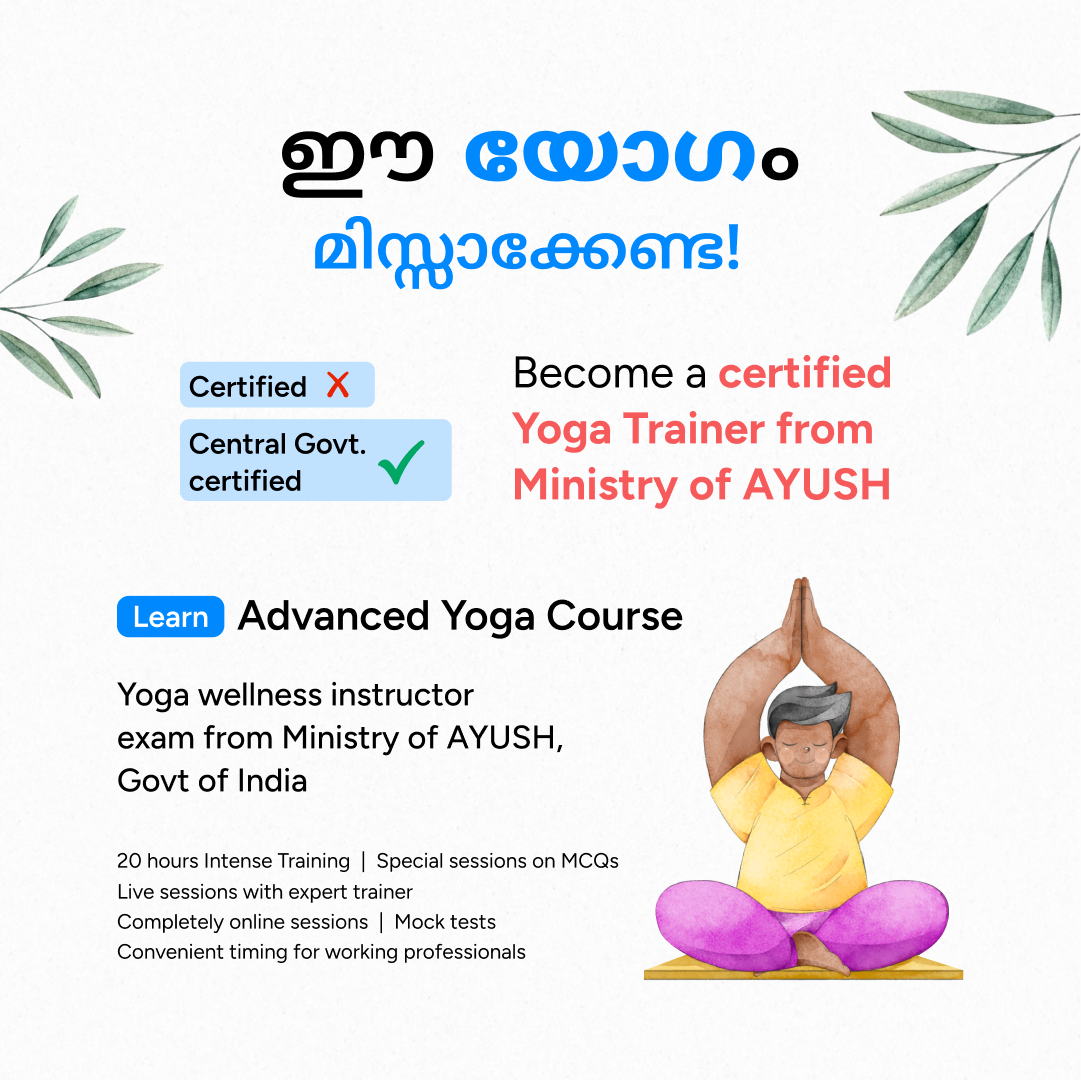Table of Contents
Stress is a natural occurrence in our environment and nearly everyone experiences some form of it. Stress is really hard on our minds and bodies, whether it’s from work, relationships, health, or life in general. As we feed on the frenzy of daily life, it has never seemed more important for us to know how to manage our stress. Yoga, often when accompanied by breath awareness, is one tool that is being used with increasing interest for its calming effects. Yoga and breath work can be incredibly powerful in managing stress.
In today’s post we’ll explore the relationship between yoga, breathing and stress, the science behind all of this, and some tools you can take with you into your life to reduce stress.
Want to learn Yoga? Want to become a Yoga trainer? Start your journey today!
Understanding Stress and Its Effects
Prior to discussing how yoga and breath work can be supportive of stress management, let us explore what stress is and its effects on the body.
What is Stress?
According to the Oxford English Dictionary, stress is “a normal physical, emotional, or mental reaction to an event or transition”. It occurs when we are overwhelmed or feeling like we’re drowning or spread too thin. Stress can be a good thing – in small doses it can help motivate us to work towards goals and meet deadlines and keep us on our toes. But, chronic stress leads to much more serious health problems including: high blood pressure, anxiety, depression, muscle tension and sleep disturbance.
How Stress Affects the Body:
Your body goes into “fight-or-flight” mode when engulfed in stress. This fight‐or‐flight response prepares the body to face or flee from danger. During this response, the sympathetic nervous system is activated and stress hormones such as cortisol and adrenaline are secreted. This answer is useful in the short term, but long-term activation causes a variety of negative effects including:
- Muscle Tension: Persistent stress can cause stiff muscles, especially in the shoulders, neck and back.
- Digestive Problems: Stress can create issues on your digestive system, leading to bloating, constipation, or irritable bowel syndrome. The Gastric issues are common these days due to this.
- Compromised Immune System: When stress persists over time, it can also dampen the immune system, leaving the body more vulnerable to diseases.
- Mental Health Problems: Protracted stress can lead to anxiety, depression, and trouble concentrating.
Now, watch as yoga and breathing wash away these effects and bring you to a calm, centered state.
Yoga’s Part in Stress Reduction
Yoga is a mind-body practice that involves physical poses, breath, and meditation. The word ‘yoga’ itself derives from the Sanskrit yuj, which means ‘to yoke’ or ‘unite. In yoga, the aim is to unify body, mind and spirit.
Physical Benefits of Yoga:
Yoga has numerous physical advantages that alleviate the impact of stress. A lot of the yoga poses help relax the body and stretch tight muscles and increase flexibility. Yoga can help release tension held in typical ‘stress areas’ such as the neck, shoulders and lower back.
- Releases Muscle Tension: Poses such as Child’s Pose (Balasana), Forward Fold (Uttanasana) and Cat-Cow (Marjaryasana-Bitilasana) loosen the back and neck, releasing built-up muscle tension.
- Encourages Good Posture: Yoga encourages good posture, which reduces strain on the muscles and helps promote relaxation.
- Improves Flexibility: By incorporating gentle stretching, yoga improves flexibility and range of motion, releasing tension in the body.
- Stimulates Circulation: The body wringing in yoga stimulates blood flow, oxygenating your muscles and assisting your body to heal and recover.
Mental Benefits of Yoga:
Yoga doesn’t just help the body, it helps the mind too. By centering the breath and flowing through the poses, we are brought into the moment, mindfully. This mindfulness mitigates stress and crafts a serene, attentive brain.
- Reduces Anxiety: Yoga’s regular practice reduces your levels of the stress hormone cortisol, which makes you feel centered and tranquil.
- Enhances Emotional Control: Yoga promotes emotional literacy, assisting you to identify and channel emotions like stress, anger, or melancholy constructively.
- Encourages Mindfulness: With breath awareness and concentrated movement, yoga assists in calming the mind and developing mindfulness that alleviates stress and increases emotional resilience.
Want to learn Yoga? Want to become a Yoga trainer? Start your journey today!
Yoga and Breathing Techniques for Stress Management
1: Which of these is the primary goal of yoga practice?
If you’ve ever been stressed or anxious (let’s be honest, we all have been), you’ve probably been told to take a deep breath. It can be hard at this point. Especially if you’re not sure how.
Breathing for relaxation is more than just inhaling and exhaling several times a minute without thinking too much. Deliberate deep breathing exercises that involve specific techniques are an effective way to calm the nervous system and reduce anxiety.
Whether you’re worried about an upcoming event or you’ve just had a stressful day, breathing exercises are a readily available tool to lean on to help you cope. A few minutes of focusing on your breathing not only helps in the moment, but can have cumulative effects over time.
One kind in particular, Yoga breathing is known to improve sleep quality and mindfulness, both of which can help improve mental health. Discover six ways to ease your mind and calm your body with yogic breathing.
1.Deep belly breathing
Deep abdominal breathing uses the diaphragm to maximize lung expansion. The movement of the diaphragm naturally directs the airflow through your body and forces the air to move deep into your abdomen.This help you to release stress in natural process. Start in a comfortable position either lying on the floor or sitting in a chair. Place one hand on your chest and the other just below your ribcage to feel the movement of your diaphragm. Breathe in slowly through your nose and count to five. Feel the air moving through your body as your stomach rises. Then exhale through your mouth to the count of five and feel your stomach relax inwards.
2.Box breathing
Create a box with your counts as you breathe. This is great for slowing the mind and quieting racing thoughts by practicing being present in the moment, which helps reduce anxiety. Breathe in as you count to four in your head. Then hold your breath for four hours. Next, exhale to the count of four. I like to use the mental image of drawing the four sides of the box with each breath count. Finally, hold down four times. Repeat this four times and feel your body relax and release tension from your muscles.
3.Alternate nostril breathing
Alternate nostril breathing is a little less common than deep belly breathing, but it can be a great way to practice controlled breathing. In addition, this exercise is a perfect addition to any kind of meditation practice. Sit in a comfortable position with your legs crossed. Once you have finished exhaling, place your right thumb on your right nostril. Inhale through the left nostril for five counts. Then cover your left nostril and uncover your right nostril before exhaling to the count of five. Now inhale through the right nostril and keep your thumb on the left nostril. Then cover your right nostril and exhale through your left. Continue alternating nostrils for several minutes.
4.Breath retention
Breath holding means holding your breath without inhaling or exhaling for a period of time. Holding your breath for a short period of time can help with relaxation and stress reduction. I recommend holding the air for 10 seconds before exhaling and then taking several regular breaths before repeating the exercise. Begin sitting with your legs crossed on the floor. Keep your back straight and inhale through your nose for five seconds. Hold the air in your lungs for 10 seconds. Once you reach 10 seconds, slowly exhale through your mouth. Take a few normal breaths before repeating the process.
5.Lion’s breath
Release stress with this fun and invigorating breathing technique. Take a deep breath and open your eyes wide. Then open your mouth and stick out your tongue while blowing all the air out of your mouth, making a “haaaa” sound. You can even contract the muscles around your neck as you exhale to really feel like a lion!
6. Breath of Fire
Fire breath involves a gentle inhalation and a strong exhalation. This exercise helps relieve stress, improve concentration and increase attention. Its a good exercise to get relief from the stress. Sit cross-legged on the floor with your back straight. Breathe in through your nose to the count of five and place your hand on your belly to feel it rise. After you finish inhaling, exhale forcefully through your nose and engage your abdominal muscles. Make sure your inhalation and exhalation are the same length, even if they are done with different amounts of force. Repeat the samea process minimum 10 times daily.
Become a Certified Yoga Instructor
Yoga Teacher Training Course by Entri App: Master authentic yoga techniques, earn certification, and build a successful career as a professional yoga instructor.
Join Now!Conclusion
These recommendations also happen to be the added Bonus of being able to withstand a lifetime because you can literally learn to manage your stress by integrating the art of yoga and breathing into your life and become more or less zen-like calm. Aside from releasing physical tension, Yoga supplies mental focus, emotional stability, and an overall sense of wellbeing. When coupled with mindful breath, yoga can activate the parasympathetic nervous system, lower cortisol, and foster a state of relaxation.
These practices are accessible and adaptable whether you are a beginner or an experienced yoga student. Through making exercise a daily habit you can develop that toolbox to help you cope with stress, mental health, and quality of life. Start your journey to yoga-zen-stress relief now. Your mind, body and spirit will appreciate it.
Become a Certified Yoga Instructor
Yoga Teacher Training Course by Entri App: Master authentic yoga techniques, earn certification, and build a successful career as a professional yoga instructor.
Join Now!

























